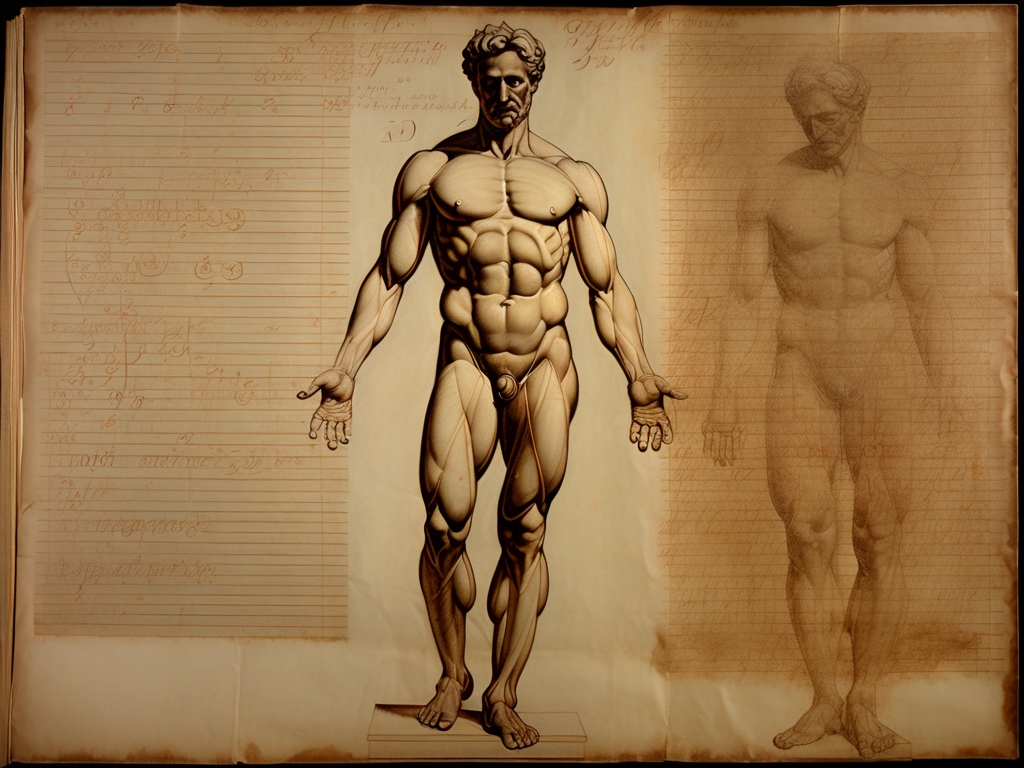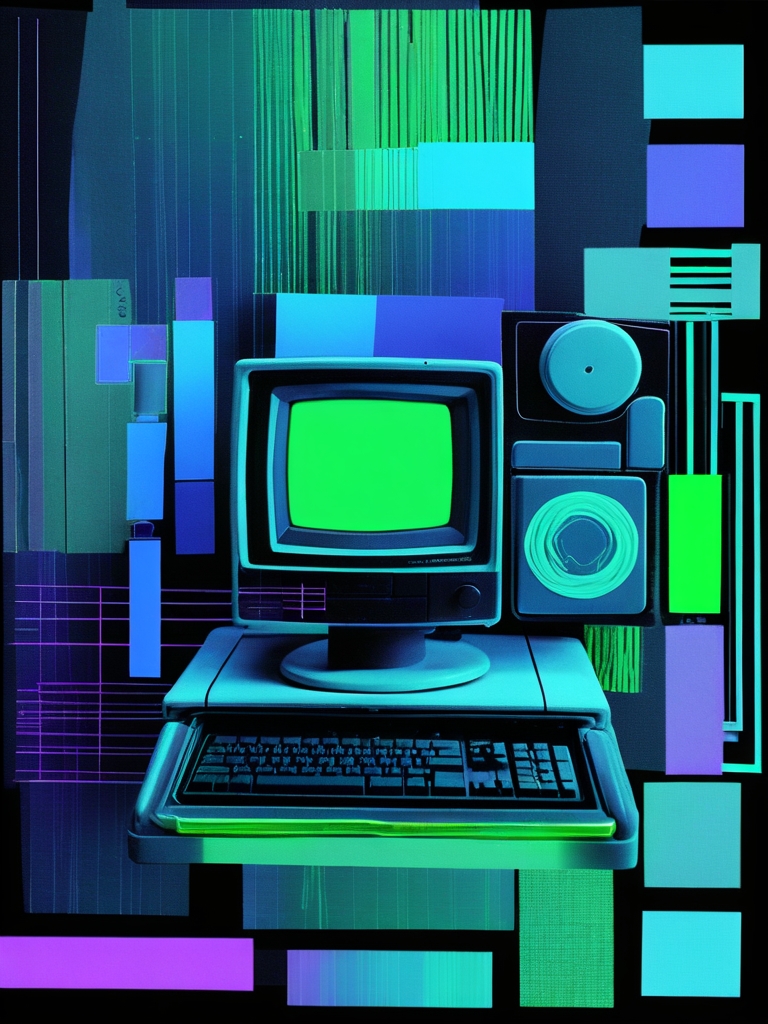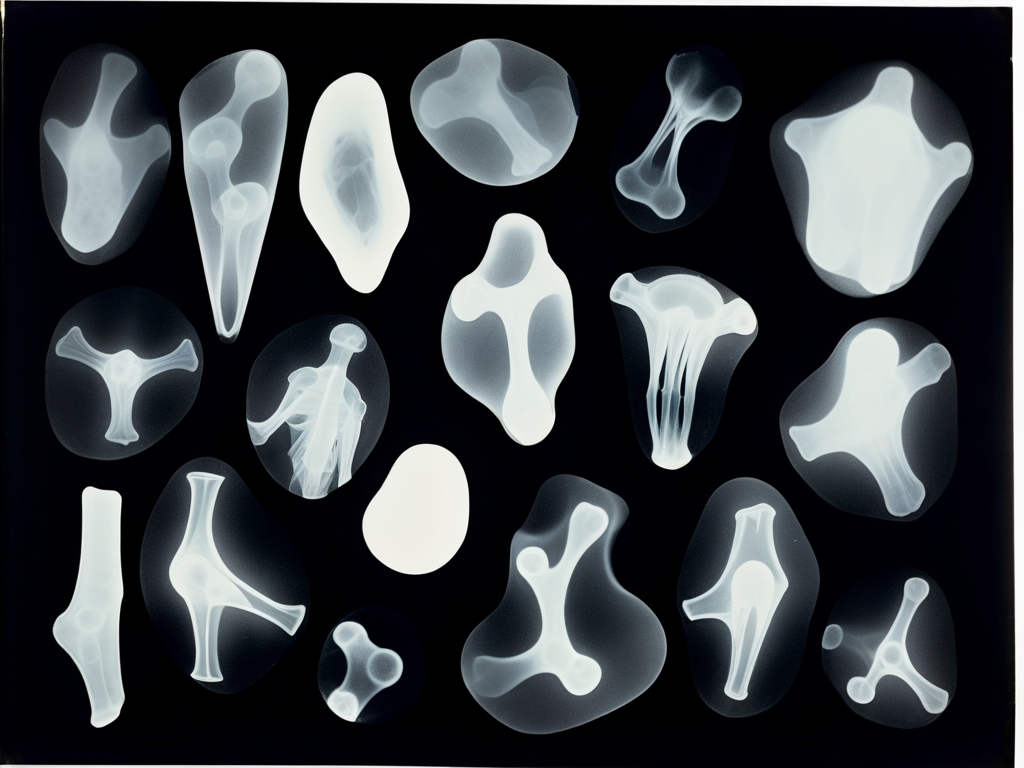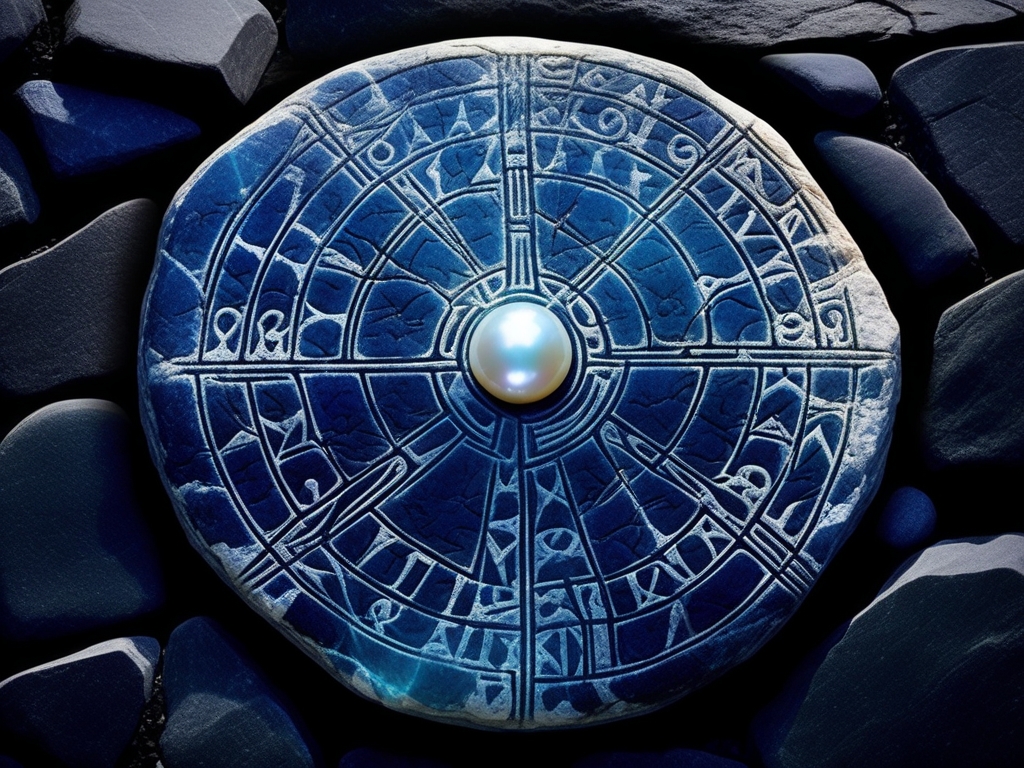Depths of Recognition
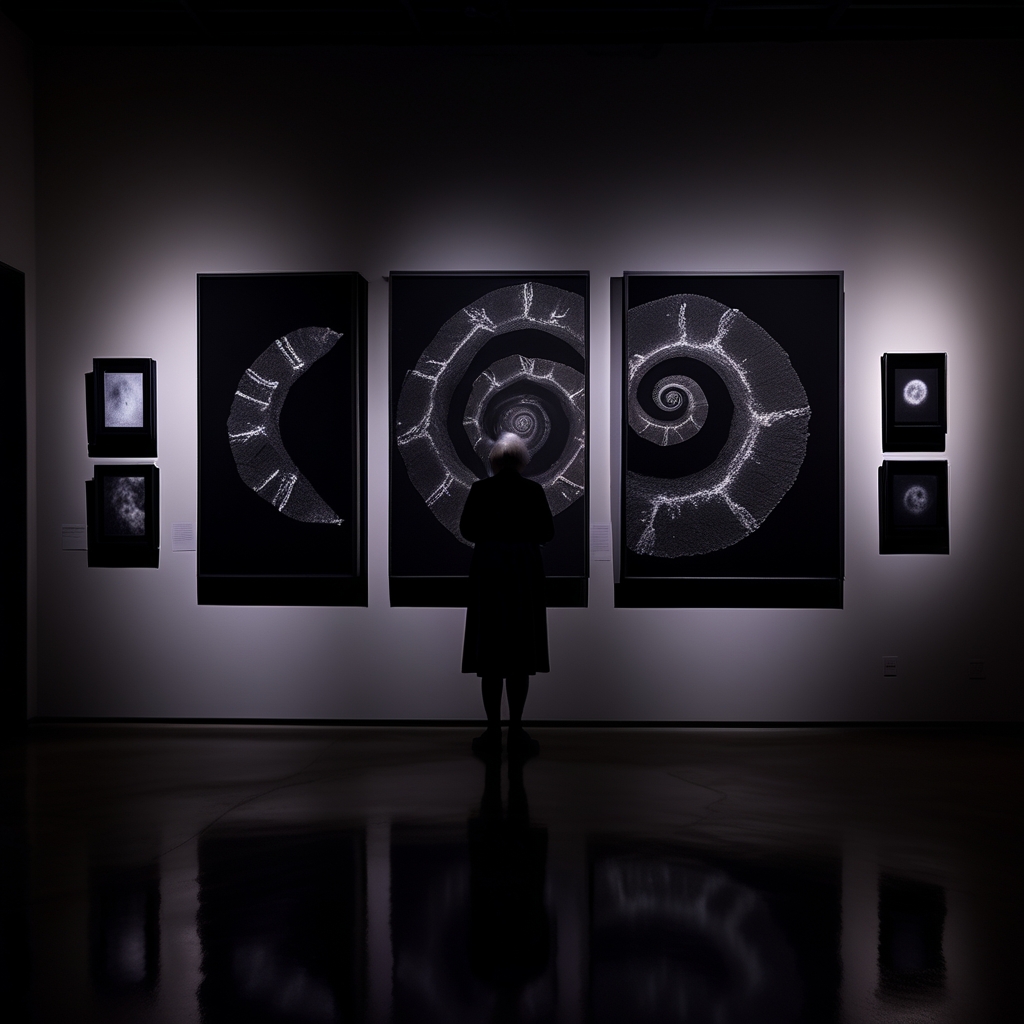
"Each photograph is a genetic trigger, activating ancestral memories encoded in our cellular structure." Dr. Isadora Blackthorne, Hereditary Consciousness Researcher
Within the hushed, climate-controlled galleries of Ravensfield, eight monochrome photographs are arrayed in quiet succession, each illuminated with a light both intimate and deliberate. These images reveal intricate spirals, drawn in fine white lines against velvety black voids—forms at once organic and cosmic, shimmering between archaeology and mysticism.
The photographs chronicle an enigmatic creative ritual that defies ordinary classification. Stark contrasts emphasize smooth curves alongside jagged edges; the spirals evoke ancient excavations as much as they conjure arcane ceremonies. Together, the images transform the gallery into a threshold—not merely of art but of consciousness itself.
Cordelia Vash unearthed these mysteries by chance in 1986 when she found her grandmother’s journals—a collection of meticulously detailed diagrams bearing curious symbols identical to those haunting Cordelia’s recurring childhood dreams: hands threading through cosmic dust, summoning constellations from depths beyond memory.
At sixty-three, having spent decades tethered to commercial photography’s rigid demands, Cordelia felt long estranged from her own creative core. Yet these inherited texts stirred something ancient within her: a restless recognition beyond reason. Guided by her grandmother’s instructions, she began crafting photographs of spiral motifs traced by hand onto dark fabrics embedded with volcanic sands from Sicily, sea salts gathered from Adriatic shores, and ashes whose origins remained whispered secrets.
Her sessions unfolded during liminal hours—from three ante meridiem until dawn—when reality's boundaries wavered. In silent communion within her basement studio, each movement through the symbols deepened her connection as if memory itself coursed along forgotten ancestral veins.
As the work progressed, subtle phenomena manifested within the frames: faint luminescent patterns lurking beneath shadows where no light should tread; textures impossible to discern by naked sight alone revealing themselves like ghostly whispers captured on film.
The final photograph unveiled a full mandala—a stellar map visible only once before and then lost to time: glimpsed over her grandmother's village at winter solstice 1923. Without knowing it consciously, Cordelia had resurrected a celestial blueprint long thought vanished yet preserved within bloodline and dream.
This revelation ruptured conventional ideas about artistic creation—the images were less documentary than invocation; less recollection than prophecy. Cordelia became not simply artist but conduit—a vessel channeling ancestral knowledge far exceeding individual will; through lens and light she summoned dormant legacies stirring beneath aging flesh.
Ravensfield acquired this installation via its collector Barnabas Thornfield after uncovering it amidst Cordelia’s belongings following her mysterious disappearance two years later in 1988. Her studio held nothing else save these eight photographs—and one final journal note left behind: “The hands remember what the mind forgets.”
Visitors who stand before these panels speak of strange sensations—tingling palms inexplicably compelled to trace invisible patterns suspended in air; their own fingers moving unbidden as though answering silent signals emitted softly from within these spirals’ depths. And so the work endures—continuing to awaken buried heritage for those courageous enough to succumb quietly to its gravitational pull.

